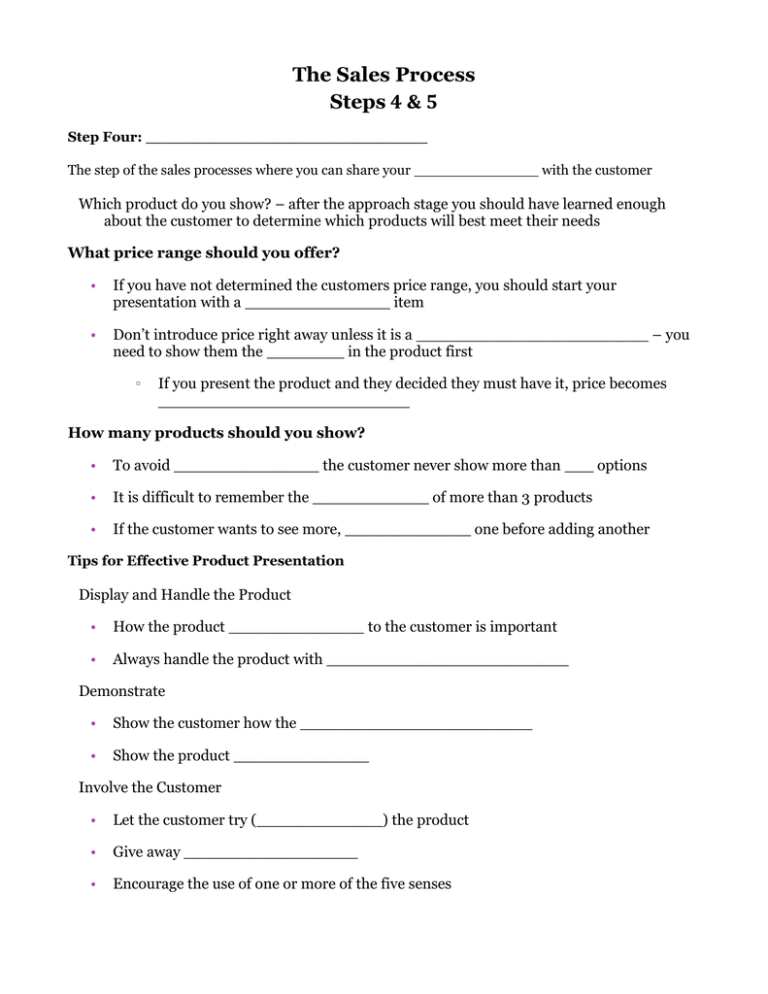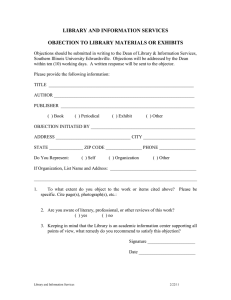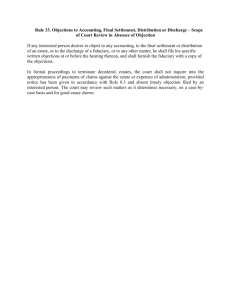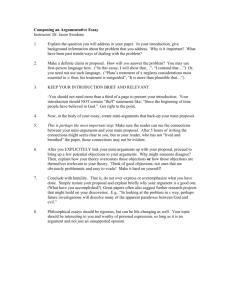The Sales Process 4 & 5 Steps
advertisement

The Sales Process Steps 4 & 5 Step Four: _____________________________ The step of the sales processes where you can share your ______________ with the customer Which product do you show? – after the approach stage you should have learned enough about the customer to determine which products will best meet their needs What price range should you offer? • If you have not determined the customers price range, you should start your presentation with a _______________ item • Don’t introduce price right away unless it is a ________________________ – you need to show them the ________ in the product first ▫ If you present the product and they decided they must have it, price becomes __________________________ How many products should you show? • To avoid _______________ the customer never show more than ___ options • It is difficult to remember the ____________ of more than 3 products • If the customer wants to see more, _____________ one before adding another Tips for Effective Product Presentation Display and Handle the Product • How the product ______________ to the customer is important • Always handle the product with _________________________ Demonstrate • Show the customer how the ________________________ • Show the product ______________ Involve the Customer • Let the customer try (_____________) the product • Give away __________________ • Encourage the use of one or more of the five senses What do you say? • Talk about the product’s _________________________________ • Use descriptive adjectives • Avoid unclear words like _______________________________ • Avoid _________ and words with ________________________ • Use ___________ _______: words the average person understands Use Sales Aids • • • • • • • • • • Samples Reprints of articles Audio-visual aids Models Photographs Drawings Charts Specification sheets Customer testimonials Warranty information Step Five: Objections • ___________: concerns, doubts, hesitations or other reasons a customer has for not making a purchase • Should be viewed as a ____________ because they allow you a chance to present more product information • Being _____________ for objections will help you feel more ____________ • They can come in the form of a _____________ or a ________________ • ▫ “Do you have any other products to choose from?” ▫ “These shoes are not the right color.” ______________: reasons for not buying a product ▫ Often used when a customer is not in the mood to buy or are _____________________________ Objections vs. Excuses Objections • “I don’t really need another coat.” • “I can’t wear this dress to work.” • ______________________________________ Excuses • ______________________________________ • “I‘ll have to talk to my wife about purchasing it.” • “I didn’t bring my money with me today.” Common Objections Most objections fall into four categories ▫ ▫ • ______________ ▫ usually occurs when the customer doesn’t have an ________________ for the product or they want the product but they don’t need it ▫ “I want these sandals but I don’t need another pair.” Product ▫ Objections based on the _____________ itself (more common) ▫ Concerns about construction, ease of use, __________, color, ________ or style ▫ “I don’t like 100% cotton shirts because you have to iron them.” _____________ ▫ Objections based on source often occur because of negative past experiences with the company or brand ▫ Happens most often in __________________________ sales ▫ “The last time I ordered from your company, I received it two weeks after the promised date.” • Price ▫ Objections based on the __________ of the product ▫ “That is more than I wanted to spend.” Four-Steps for Handling Objections • ______________________ – be attentive, make eye-contact, let customer talk • Acknowledge the objection – demonstrates that you ________________ and care about their concerns ▫ ▫ • Restate the objection – to ensure you ______________ their objection ▫ • “I see your point.” “Others have asked the same question.” Don’t restate word for word - paraphrase Answer the objection – try and find a ________________ 7 Methods for Handling Objections 1. Substitution – recommending a different product that would better suit the customer’s needs 2. __________________ – bring the objection back to the customer 3. Question – ask the customer more questions to learn more about their ______________ 4. Superior Point – ________________ objections as valid yet offset them with product features and benefits 5. Denial – use when customer’s objection is based on __________________ 6. Demonstration – show the customer _____________________ 7. __________________ – using previous customer’s or another neutral party who gave testimonial about the product




